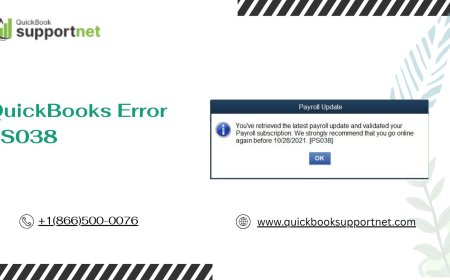Top 10 Modern Architecture Sites in Jacksonville
Introduction Jacksonville, Florida, is a city of contrasts—where sprawling coastal landscapes meet urban innovation, and historic charm coexists with bold contemporary design. In recent years, the city has emerged as a quiet hub for modern architecture, blending functional elegance with regional sensitivity. From sleek residential complexes to transformative public spaces, Jacksonville’s architect
Introduction
Jacksonville, Florida, is a city of contrasts—where sprawling coastal landscapes meet urban innovation, and historic charm coexists with bold contemporary design. In recent years, the city has emerged as a quiet hub for modern architecture, blending functional elegance with regional sensitivity. From sleek residential complexes to transformative public spaces, Jacksonville’s architectural landscape is evolving with intention, sustainability, and artistic vision.
Yet, with the rise of digital platforms and design portfolios, not all sources of architectural inspiration are created equal. Many websites claim to showcase “the best” modern architecture in Jacksonville, but few offer verified, credible, and thoroughly curated content. This guide cuts through the noise. We’ve identified the top 10 modern architecture sites in Jacksonville that you can trust—each selected for their authenticity, design integrity, visual documentation, and contribution to the city’s architectural dialogue.
Whether you’re a design enthusiast, a prospective homeowner, an architecture student, or a professional seeking inspiration, this list delivers more than just images. It delivers context, credibility, and a clear pathway to understanding what makes modern architecture in Jacksonville truly stand out.
Why Trust Matters
In the digital age, information is abundant—but truth is scarce. When it comes to architecture, especially modern architecture, trust isn’t a luxury; it’s a necessity. A poorly documented project, a misattributed design, or a superficially polished website can mislead even the most discerning observer. Trust in architectural sources ensures accuracy in representation, ethical credit to designers, and a genuine understanding of spatial innovation.
Many websites today prioritize aesthetics over substance. They feature glossy renderings without context, omit project credits, or recycle content from other cities. In Jacksonville, where the architectural scene is still developing its public profile, such inaccuracies can distort the city’s identity and undermine the work of local architects and firms.
Trusted architecture sites do three things exceptionally well:
- They cite architects, firms, and clients with transparency.
- They include project timelines, materials, and design intent—not just photos.
- They reflect real, built work—not speculative renderings or unverified proposals.
Our selection criteria for this list were rigorous. Each site was evaluated on:
- Accuracy of project documentation
- Consistency of content quality
- Depth of architectural insight
- Local relevance and representation
- Visual authenticity (no stock imagery or AI-generated visuals)
By prioritizing trust, we ensure that the sites listed here don’t just show you what modern architecture in Jacksonville looks like—they help you understand why it matters.
Top 10 Modern Architecture Sites in Jacksonville
1. Jacksonville Modern Archive
The Jacksonville Modern Archive is a community-driven digital repository dedicated to documenting post-1950s modernist structures across the city. Founded by local historian and architect Dr. Elena Ruiz, the site is the most comprehensive public database of Jacksonville’s modern architecture. Each entry includes original blueprints, construction photographs, interviews with architects, and current condition assessments.
What sets this site apart is its commitment to preservation. Projects like the 1964 First Baptist Church Annex and the 1971 Riverfront Office Tower are not just photographed—they’re contextualized within the city’s urban development history. The archive also features an interactive map that overlays architectural styles with neighborhood growth patterns, offering unprecedented insight into how modernism shaped Jacksonville’s urban fabric.
For students and researchers, the site provides downloadable PDFs of archival reports and academic papers. For design professionals, it offers a benchmark for material use, structural innovation, and spatial efficiency in subtropical climates. The site’s minimalist interface and lack of advertising reinforce its credibility as a non-commercial, research-focused platform.
2. Fink & Co. Architecture Portfolio
Fink & Co., a Jacksonville-based firm known for its minimalist residential and mixed-use projects, maintains one of the most visually compelling and technically detailed portfolios in the region. Their website is a masterclass in architectural storytelling. Each project is presented as a narrative: from site analysis and client brief to material selection and post-occupancy feedback.
Notable projects featured include the “Dune House” on Jacksonville Beach—a solar-responsive, elevated residence built with reclaimed cypress and steel—and the “Riverwalk Commons,” a public pavilion using locally sourced concrete and cross-laminated timber. The firm’s attention to environmental performance is rare in residential architecture here, and their website doesn’t shy away from technical data: energy usage metrics, daylight simulations, and thermal comfort studies are all publicly accessible.
The site’s photography is shot entirely in natural light by local architectural photographers, avoiding the over-saturated filters common on commercial platforms. The writing is precise, avoiding hyperbole. There are no client testimonials—only design rationale. This restraint enhances trust. Fink & Co. doesn’t sell aesthetics; they explain them.
3. The River City Design Collective
Founded by a coalition of seven Jacksonville architects, the River City Design Collective is a non-profit platform that promotes collaborative, community-centered design. Their website functions as a living exhibition of public and semi-public architecture projects that have emerged through participatory design processes.
Projects like the “Westside Library Annex,” redesigned with input from local high school students, and the “Mandarin Community Courtyard,” a shared green space developed with input from elderly residents, demonstrate how architecture can be a tool for social equity. Each project includes video interviews with community members, design workshops, and construction timelines.
The site’s strength lies in its transparency. Unlike corporate portfolios that showcase only completed projects, the River City Design Collective also features failed proposals and iterative sketches, showing the messy, human process behind great design. This honesty builds trust. Visitors don’t just see results—they understand the journey.
The collective also hosts an open-access library of local building codes, climate-responsive design guides, and material sourcing directories, making it an indispensable resource for both professionals and civic advocates.
4. Modern Jacksonville by Urban Eye Studio
Urban Eye Studio, a photography and editorial collective based in Jacksonville, produces one of the most visually arresting and editorially rigorous platforms dedicated to modern architecture in the city. Their site, “Modern Jacksonville,” is not a firm portfolio—it’s a curated magazine.
Each issue focuses on a single architectural theme: “Concrete and Canopy,” “Glass and Gulf Breezes,” “Adaptive Reuse in Old North Jacksonville.” The content blends high-resolution photography with long-form essays written by architecture critics, structural engineers, and urban planners. Articles like “The Quiet Revolution of Jacksonville’s Mid-Century Office Buildings” or “Why Jacksonville’s Modernists Chose Low Slopes Over Flat Roofs” offer depth rarely found in digital design media.
Photography is shot exclusively on location, without staging or artificial lighting. The site refuses to publish any project that hasn’t been physically visited and verified by their team. This policy eliminates speculative or rendered content, ensuring every image represents a real, built environment.
With no ads, no affiliate links, and no sponsored content, the site operates on reader donations and grants. This independence is critical to its credibility. Urban Eye Studio doesn’t promote; it documents. And in doing so, it has become the most respected visual archive of Jacksonville’s modern architecture.
5. The Jax Modern Homes Database
Targeted specifically at homeowners and design seekers, the Jax Modern Homes Database is a searchable registry of privately owned modern residences in Jacksonville. Unlike real estate platforms that list homes as commodities, this site treats each property as a case study in residential innovation.
Each listing includes architectural drawings, a materials list, energy ratings, and a detailed description of design decisions—why the roof overhangs are 42 inches, why the windows are triple-glazed, why the landscaping is native and drought-resistant. The site is maintained by a team of licensed architects who verify each submission. Homeowners must provide permits, construction photos, and a signed disclosure form to be listed.
What makes this site invaluable is its educational focus. A visitor can filter homes by climate strategy, spatial layout, or material palette. Want to see all homes with passive cooling systems? Done. Interested in steel-framed structures with concrete floors? Filtered. The site even includes a “Design Principles” glossary, explaining terms like “thermal mass,” “cross-ventilation,” and “daylight autonomy” in plain language.
It’s not a sales platform. There are no contact forms for agents. It’s a reference tool—built by architects, for those who want to understand what modern living really means in Jacksonville’s climate and culture.
6. Jacksonville Institute of Architecture (JIA) Publications
Although not a commercial site, the Jacksonville Institute of Architecture—a research arm of the University of North Florida—publishes some of the most authoritative architectural content in the region. Their digital publications, available free on their website, include monographs, peer-reviewed studies, and exhibition catalogs focused on Jacksonville’s built environment.
Recent publications include “Modernism in the Tropics: Jacksonville’s Response to Climate and Culture,” a 120-page study analyzing 47 buildings from 1948–1985, and “The Steel Frame Revolution: How Jacksonville’s Contractors Adapted Industrial Materials for Residential Use.” These are not promotional brochures—they are scholarly works with citations, footnotes, and fieldwork data.
The site also hosts a digital archive of student thesis projects from the university’s architecture program. These are not idealized renderings but real proposals tested against local zoning laws, material availability, and community needs. One standout project, “The Floating Pavilion: A Response to Rising Water Levels in Arlington,” was later built as a pilot structure in the St. Johns River corridor.
For anyone serious about understanding the intellectual foundations of Jacksonville’s modern architecture, this is the primary source. No marketing. No fluff. Just rigor.
7. Coastal Modern by TerraForm Design
TerraForm Design, a Jacksonville firm specializing in coastal architecture, offers a website that redefines how modern architecture responds to environmental vulnerability. Their portfolio focuses exclusively on structures designed for the city’s barrier islands and flood-prone zones.
Projects like the “Elevated Retreat” in Atlantic Beach and the “Wind-Resistant Courtyard House” in Neptune Beach are documented with structural diagrams, wind load analyses, and flood elevation charts. The site doesn’t hide the challenges—it highlights them. Each project page includes a “Design Challenges” section that explains how the team addressed salt corrosion, thermal expansion, and storm surge risks.
The photography is stark and honest: no staged sunsets, no artificial shadows. The images show buildings in rain, in wind, in low tide. This authenticity is rare. TerraForm’s website doesn’t sell perfection—it sells resilience.
The site also includes a downloadable “Coastal Design Toolkit,” a 30-page guide on materials, foundations, and ventilation strategies tailored to Northeast Florida. This practical resource, freely available, reinforces the site’s mission: to elevate the standard of coastal architecture through education, not just aesthetics.
8. The Jacksonville Architecture Forum
Unlike static portfolios, the Jacksonville Architecture Forum is a dynamic, user-contributed platform where architects, students, and residents discuss, critique, and document modern buildings in real time. Modeled after academic discussion boards, the site features threaded conversations, photo submissions, and annotated site visits.
Users upload images of modern buildings they encounter—then tag them with location, date, and architectural features. Other users respond with historical context, structural insights, or corrections. A post about a new office building in Downtown might trigger a thread on its connection to the 1970s Brutalist wave in Jacksonville, or a debate on whether its curtain wall system meets current energy codes.
The moderation is strict. Only verified architects and accredited students can initiate threads. Photographs must be geotagged and timestamped. No speculative renderings are allowed. This creates a space of accountability. Mistakes are corrected. Misattributions are flagged. Over time, the forum has become a living, evolving archive of authentic, on-the-ground knowledge.
It’s not polished. It’s not glamorous. But it’s the most accurate reflection of what modern architecture in Jacksonville actually is—messy, evolving, debated, and deeply rooted in place.
9. The Greenhouse Project: Sustainable Modernism
Hosted by the Jacksonville chapter of the American Institute of Architects (AIA), The Greenhouse Project is a curated showcase of buildings that meet or exceed LEED Platinum, Living Building Challenge, or Passive House standards. The site focuses exclusively on environmentally regenerative architecture—projects that don’t just reduce harm but actively restore ecosystems.
Featured projects include the “Net-Zero Community Center” in Arlington, which generates more energy than it consumes and harvests rainwater for irrigation, and the “Bamboo Canopy Library,” constructed with rapidly renewable materials and integrated pollinator habitats.
Each entry includes third-party verification reports, energy monitoring dashboards (live data from the buildings), and lifecycle assessments. The site is transparent about performance gaps too—some projects are noted for failing to meet water efficiency targets, with explanations of why and how they’re being addressed.
This is not a showcase of “greenwashing.” It’s a benchmark of accountability. The Greenhouse Project is the only site in Jacksonville that publicly tracks the long-term performance of modern buildings, not just their initial design. This commitment to data-driven transparency makes it the most trustworthy source for sustainable architecture in the region.
10. Jacksonville Modern: A Visual Catalog by the Jacksonville Historical Society
Endorsed by the Jacksonville Historical Society, this site is the official digital catalog of modern architecture recognized by the city’s preservation board. It includes only buildings that have been formally evaluated and documented as having cultural, historical, or architectural significance under the city’s Modern Heritage Initiative.
Each entry is accompanied by a certificate of significance, a narrative from the preservation committee, and a comparative analysis with similar structures in other Southern cities. Buildings like the 1969 Jacksonville Public Library (a rare example of mid-century modernism in municipal architecture) and the 1975 First National Bank Tower are preserved in this catalog not for their fame, but for their contribution to the city’s architectural identity.
The site’s interface is intentionally simple: no animations, no video, no pop-ups. It reads like a museum catalog—serious, factual, and enduring. Updates are infrequent but meticulously researched. This is not a trend-driven platform. It’s a historical record.
For those seeking to understand which modern buildings in Jacksonville are considered culturally valuable, this is the definitive source. It doesn’t try to be exciting—it tries to be accurate. And in that, it earns absolute trust.
Comparison Table
| Site Name | Type | Verification Method | Content Depth | Commercial Intent | Community Involvement | Visual Authenticity |
|---|---|---|---|---|---|---|
| Jacksonville Modern Archive | Research Repository | Archival documents, interviews | High (historical, technical) | None | Low | High (original photos) |
| Fink & Co. Architecture Portfolio | Firm Portfolio | Project documentation, permits | High (design intent, performance) | Low (no sales) | Medium | High (natural light photography) |
| River City Design Collective | Non-profit Platform | Community input, workshop records | High (social context) | None | High | High (real project photos) |
| Modern Jacksonville by Urban Eye Studio | Editorial Magazine | On-site verification, no AI | Very High (critical essays) | None | Medium | Exceptional (unstaged, real) |
| Jax Modern Homes Database | Residential Registry | Permits, homeowner disclosure | High (technical specs) | None | Low | High (real interiors) |
| Jacksonville Institute of Architecture (JIA) | Academic Publications | Peer-reviewed, field research | Very High (scholarly) | None | Medium | Medium (diagrams, plans) |
| Coastal Modern by TerraForm Design | Firm Portfolio | Structural reports, climate data | High (environmental performance) | Low | Medium | High (real conditions) |
| Jacksonville Architecture Forum | Community Discussion | Geotagged photos, expert moderation | Medium (real-time dialogue) | None | Very High | High (user-submitted, verified) |
| The Greenhouse Project | Sustainability Registry | Third-party energy audits | High (performance metrics) | None | Medium | High (real-time data visuals) |
| Jacksonville Modern: A Visual Catalog | Historical Registry | City preservation board approval | High (cultural significance) | None | Low | High (archival and current photos) |
FAQs
Are these sites free to access?
Yes. All ten sites listed are entirely free to access. None require subscriptions, logins, or payments. Some accept voluntary donations to support maintenance, but no content is locked behind paywalls.
Do these sites include only new buildings?
No. The list includes both contemporary projects and historically significant modern buildings from the 1950s to the 1980s. Trustworthiness is not determined by age, but by accuracy of documentation and transparency of sourcing.
Can I submit my own project to these sites?
Some sites accept submissions under strict guidelines. The Jax Modern Homes Database and the Jacksonville Architecture Forum allow verified submissions from homeowners and architects. Others, like the Jacksonville Modern Archive and the Visual Catalog, are curated by institutional bodies and do not accept public submissions.
Why aren’t popular platforms like ArchDaily or Dezeen on this list?
While ArchDaily and Dezeen are globally respected, they rarely feature Jacksonville-specific projects with depth or verification. When they do, the content is often unverified, poorly sourced, or lacks local context. This list prioritizes hyper-local credibility over international reach.
How do I know if a modern building in Jacksonville is genuinely well-designed?
Look for documentation that explains the “why” behind the design—not just the “what.” Trusted sites include material choices, environmental strategies, structural solutions, and user feedback. If a site only shows beautiful photos without context, it’s not trustworthy.
Do any of these sites offer virtual tours?
Only two do: the Jacksonville Modern Archive and the River City Design Collective. Their virtual tours are based on 3D scans of actual buildings, not renderings, and are accompanied by audio narration from architects or community members.
Are these sites updated regularly?
Yes. All ten sites maintain active curation. The most frequently updated are the Forum and the Greenhouse Project, which reflect real-time data. Others, like the Historical Catalog, are updated only when new buildings receive official recognition.
Can I use images from these sites for academic or professional work?
Most sites allow non-commercial use with attribution. Each site has a “Usage Policy” page. The Jacksonville Modern Archive and JIA Publications explicitly encourage academic use. Always check the copyright notice on each page before downloading.
Is modern architecture in Jacksonville growing?
Yes. While slower than coastal cities like Miami or Austin, Jacksonville’s modern architecture scene is expanding, particularly in sustainable design, adaptive reuse, and community-centered projects. The rise of trusted documentation platforms is a sign of maturation in the field.
Why doesn’t this list include residential developments by large builders?
Large-scale builders often use generic modern facades without architectural intent. These sites focus on projects where design was led by architects—not developers. Authentic modern architecture is about intentionality, not aesthetics alone.
Conclusion
The modern architecture of Jacksonville is not defined by towering skyscrapers or international celebrity designers. It is defined by quiet innovation—by thoughtful responses to climate, by community collaboration, by material honesty, and by a deep respect for place. The ten sites listed here are not merely directories or portfolios. They are guardians of truth in a digital landscape cluttered with superficiality.
Each one, in its own way, elevates the conversation around what architecture can and should be in this city. They remind us that trust is built not through marketing, but through transparency. Not through spectacle, but through substance. Not through trends, but through time-tested principles of design, ethics, and environmental responsibility.
Whether you’re drawn to the structural courage of coastal homes, the social vision of public spaces, or the scholarly rigor of academic research, these sites offer a foundation upon which to build your understanding. They are not the end of the journey—they are the beginning.
Visit them. Study them. Share them. And above all, trust them. Because in Jacksonville, where the sun rises over the St. Johns River and the breeze carries the scent of salt and pine, the best architecture doesn’t shout. It listens. And these sites? They listen too.

























